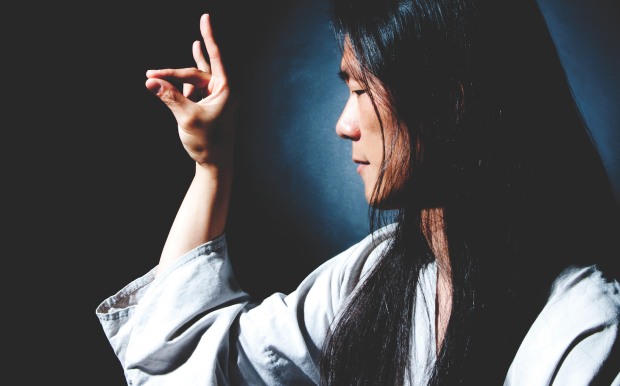Joowan Kim wants to pioneer a new kind of American art music. He derides concert hall compositions as either reheated European classics or cultural appropriation pieces, like “Tibetan yak herding songs,” which he compares to wildflowers ripped from their native field and put into an expensive vase. After emigrating from South Korea at the age of 20 to attend the Berklee School of Music, Kim began combining orchestral techniques with hip-hop, a genre he hadn’t heard up until that point.
“I’m almost like a future-generation American, because they will recognize hip-hop as much as jazz,” he says, predicting that one day most will view early hip-hop artists as “great forefathers of American culture. And they’re going to create this kind of shit that I’m doing right now. So I’m creating a prototype of new American culture.”
Kim’s vision of hip-hop’s future isn’t limited to music. True to the multi-pronged roots of the cultural movement, he’ll be showcasing graffiti artists and breakdancers at his Future of Hip-Hop Summit at Art Boutiki. The event foreshadows his desire to host events in concert halls where patrons walk among the three simultaneously performed arts—an exhibition akin to the underground parties in the early years of hip-hop. Kim plans nothing short of cultural revolution.
“I’m going to fucking destroy all the symphonies” he says. “I’m going to destroy all the operas with this new idea. So this is basically the Uber of the symphony orchestra.”
Among his commissions, Kim has composed reimaginings of “C.R.E.A.M.” and “California Soul” with his Ensemble Mik Nawooj (EMN) which includes a cellist, wind instrumentalists and a soprano opera singer, along with two emcees capable of rapping at whatever tempo tickles Kim’s fancy. The songs aren’t so much covers as they are deconstructions, where Kim twists the original sound and message of well-known source material into something new. For example, on the Wu-Tang classic that champions an all-consuming chase of paper, rhymesayers Do D.A.T. and Sandman spit bars decrying the callousness of capitalism.
He melds “compatible” features of the rarely combined genres into a fusion that isn’t classical or hip-hop, but instead the first steps toward a style he thinks will be the next wave of music to come out of conservatories. He believes that we are now in a moment similar to the early days of jazz—when the genre leapt from “jungle music” to being recognized as America’s most significant gift to the world.
“Jazz has Ph.D. programs now,” he says, anticipating that the same will soon be common for hip-hop. “We’re just giving a slight nudge. I saw it in advance. Not even 20 years in advance, I’m seeing it like five years in advance.”
Among the other panelists, there’s Ernest Doty, a former street graffiti artist who began getting commissions for murals after he was busted for vandalism and his name landed in New Mexico papers. Also, Oakland-based dance groups TURF Inc. and the all-female Mix’d Ingrdnts will showcase their breakdancing moves.
All the artists are united by the usage of sampling. Doty blends psychedelia with cultural critique, such as his depiction of a teeth-baring great white shark wearing a business suit. And Jenay Anolin from Mix’d Ingrdnts started as a ballet dancer who became attracted to the “larger canvas” allowed by hip-hop.
“There is this hip-hop aesthetic,” Kim says. “You take something out of context and you put it into your own context and it becomes new art. It used to be not as respected, but now it’s undeniable how powerful that is. It’s so powerful. So that’s hip-hop. For me, it’s a way of thinking.”
Kim started on this idea as a way to stand out from his contemporaries and make works that felt true to his identity and his adopted country. But after reflecting on the “poisonous division” that has characterized America during this election, he sees his fusion of African American and European music as a way toward a more enlightened future.
Future of Hip-Hop Summit
Oct 22, 7:30pm, $10-$15
Art Boutiki, San Jose



